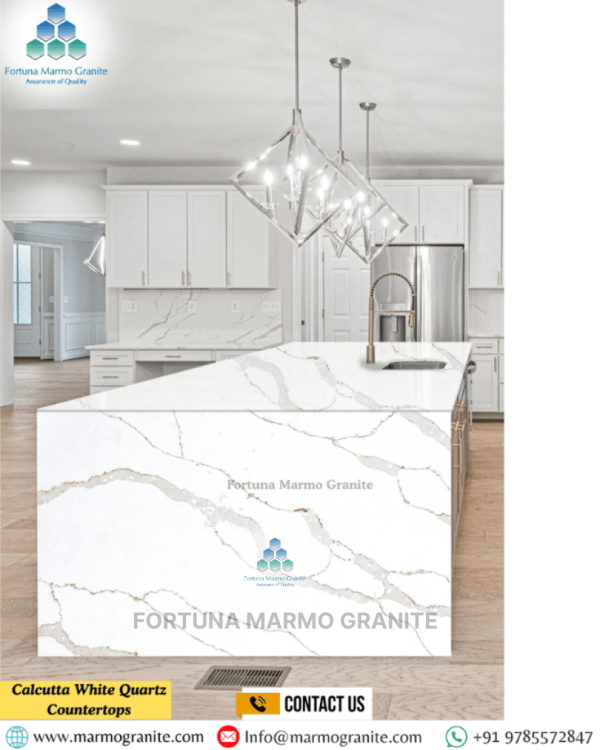Quartz Countertops That Mimic Natural Stone: The Perfect Blend of Beauty and Durability
Quartz Countertops Supplier In interior design, countertops draw immediate attention. They serve as functional surfaces and also act as central design statements, shaping the look of kitchens and bathrooms. For centuries, natural stones like marble and granite have been top choices. Their beauty and distinctive patterns make them timeless. However, their porous nature, tendency to stain, and high-maintenance care often create challenges for homeowners.
Moreover, This is where quartz countertops come in. Engineered for performance, quartz provides a smarter alternative to natural stone. It delivers exceptional durability, non-porosity, and easy maintenance. Moreover, modern quartz offers more than functionality. It now replicates the veining and elegance of marble or granite. In this way, quartz gives homeowners the best of both worlds: natural beauty paired with engineered strength.
In this blog, we explore quartz countertops that mimic natural stone. We'll show how manufacturers achieve this resemblance, highlight the key benefits of quartz, and explain why it may be the perfect choice for your next renovation project.


The Allure of Natural Stone Looks in Quartz
Marble-Look Quartz
Moreover, Marble remains one of the most desired materials in design. Its elegant veining and luminous quality have symbolized luxury for centuries. However, marble also comes with challenges. It is soft, porous, and easily etched by acidic substances, making it high-maintenance in busy kitchens.
In addition, This is where marble-look quartz steps in. It captures the beauty of marble without the constant upkeep. From the subtle, feathery veining of Carrara to the bold patterns of Calacatta or Statuario, quartz manufacturers have perfected the art of replication.
In contrast, As a result, homeowners can enjoy the classic sophistication of marble in kitchens or bathrooms. Quartz delivers pristine white backdrops, intricate gray or gold veins, and timeless elegance—all without the worry of stains or spills. This makes it especially appealing in open-concept homes where the kitchen often serves as the focal point.
Granite-Look Quartz
Consequently, Granite is admired for its speckles, flecks, and granular patterns that create a strong, earthy appeal. The stone itself is durable, but its porous nature requires sealing. Some varieties can also be prone to staining.
In particular, Granite-look quartz solves these challenges. It replicates the diverse patterns and shades of natural granite, from subtle uniform speckles to bold, variegated designs. Homeowners can enjoy the rustic warmth of granite without the hassle of sealing or the risk of bacteria seeping into pores.
Another advantage lies in its consistency. Quartz slabs provide uniform color and pattern throughout. This makes them ideal for large projects where matching natural granite slabs can be difficult.
The Unbeatable Durability and Practicality of Quartz
Non-Porous Nature
One of the most significant advantages of quartz is its non-porous surface. Unlike natural stones such as marble and granite, which have microscopic pores that can absorb liquids, quartz is engineered to be completely impermeable. This means:
- Stain Resistance: Spills from wine, coffee, oil, or acidic foods (like lemon juice or vinegar) will not penetrate the surface, making cleanup a breeze and virtually eliminating the risk of permanent staining.
- Hygienic Surface: The non-porous nature also inhibits the growth of bacteria, mold, and mildew, making quartz an incredibly hygienic choice for kitchen and bathroom environments. This is a considerable advantage for food preparation areas.
High Scratch Resistance
Composed primarily of quartz, one of the hardest minerals on Earth (ranking 7 on the Mohs scale, second only to diamond and topaz), quartz countertops are remarkably resistant to scratches and abrasions from everyday use. While it's always advisable to use cutting boards, minor slips of a knife or the dragging of cookware are far less likely to leave a mark on a quartz surface compared to softer natural stones like marble.
Conclusion
In conclusion, quartz countertops that mimic natural stone offer the ideal combination of stunning visual appeal and unmatched resilience, making them a top choice for modern homeowners, interior designers, and builders alike. Yet, These engineered surfaces beautifully replicate the timeless allure of materials like marble, granite, and soapstone—capturing the veining, colors, and textures of nature while delivering superior durability, consistency, and low-maintenance performance.
Moreover, Whether you're renovating a kitchen, upgrading a bathroom, or designing a luxury commercial space, quartz brings both sophistication and practicality to the table. Its non-porous surface resists stains, scratches, and bacteria, ensuring long-term cleanliness and enduring style. In addition, As demand grows for high-end aesthetics without the downsides of natural stone, quartz stands out as the smart, sustainable solution. Indian Granite Supplier At Fortuna Marmo Granite, we take pride in offering premium quartz countertops that embody this perfect blend of beauty and durability, delivering elegance and performance to every project with expert craftsmanship and global reach.

